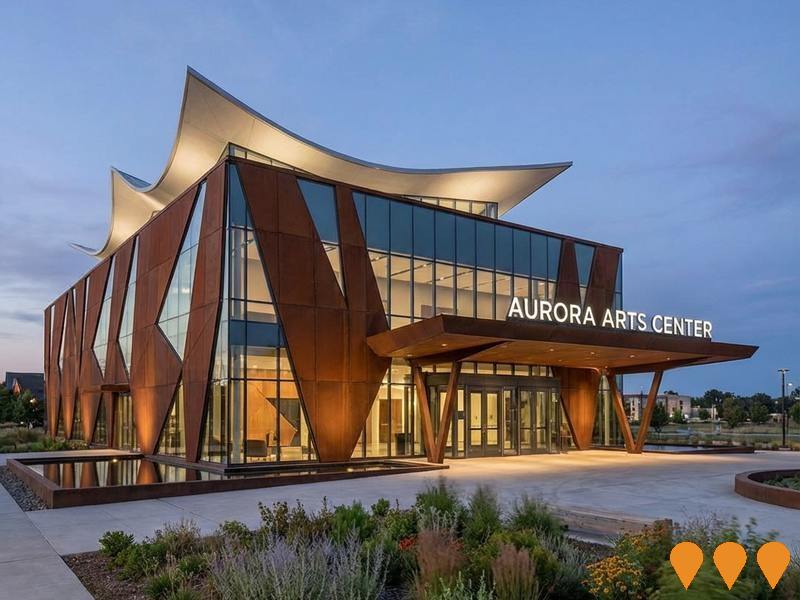Chart Color Schemes
est. as @ -- *
ABS ERP | -- people | --
2021 Census | -- people
Sales Activity
Curious about local property values? Filter the chart to assess the volume and appreciation (including resales) trends and regional comparisons, or scroll to the map below view this information at an individual property level.
Find a Recent Sale
Sales Detail
Population
An assessment of population growth drivers in Holder reveals an overall ranking slightly below national averages considering recent, and medium term trends
Holder's population was approximately 2,870 as of August 2025. This figure represents an increase of 54 individuals since the 2021 Census, which reported a population of 2,816 people. The change is inferred from the estimated resident population of 2,870 from the ABS in June 2024 and an additional 8 validated new addresses since the Census date. This results in a density ratio of 1,534 persons per square kilometer, which exceeds the average seen across national locations assessed by AreaSearch. Holder's growth rate of 1.9% since the 2021 census surpassed that of the SA3 area (0.5%), indicating it as a growth leader in the region. Overseas migration contributed approximately 52.8% of overall population gains during recent periods, driving primary population growth.
AreaSearch is adopting ABS/Geoscience Australia projections for each SA2 area, released in 2024 with 2022 as the base year. For areas not covered by this data and years post-2032, age group growth rates from the ACT Government's SA2 area projections are adopted, using 2022 as a base. Future population trends indicate an overall decline of 19 persons by 2041 according to current methodology. However, specific age cohorts are anticipated to grow, notably the 45 to 54 age group, projected to increase by 72 people.
Frequently Asked Questions - Population
Development
Residential development activity is lower than average in Holder according to AreaSearch's national comparison of local real estate markets
Holder averaged approximately four new dwelling approvals annually over the past five financial years, totalling 22 homes. As of FY-26, no approvals have been recorded yet. On average, 5.8 new residents per year were associated with each home built between FY-21 and FY-25, indicating significant demand exceeding supply. This fiscal year has seen $622,000 in commercial approvals, suggesting minimal commercial development activity.
Compared to the Australian Capital Territory, Holder has around two-thirds the rate of new dwelling approvals per person, placing it among the 11th percentile nationally, offering limited choices for buyers and supporting demand for existing homes. Recent construction comprises 67% detached houses and 33% attached dwellings, expanding medium-density options across various price brackets. Population projections indicate stability or decline, suggesting reduced housing demand pressures in Holder.
With population projections showing stability or decline, Holder should see reduced housing demand pressures, benefiting potential buyers.
Frequently Asked Questions - Development
Infrastructure
Holder has moderate levels of nearby infrastructure activity, ranking in the 47thth percentile nationally
No changes can influence a region's performance more than alterations to local infrastructure, major projects, and planning initiatives. Zero projects have been identified by AreaSearch that could potentially impact this area. Key projects include Molonglo Group Centre to Town Centre Transition, Fetherston Weston, Canberra Hospital Master Plan, and Deakin Private Hospital. The following list details those most likely to be relevant:.
Professional plan users can use the search below to filter and access additional projects.
INFRASTRUCTURE SEARCH
 Denotes AI-based impression for illustrative purposes only, not to be taken as definitive under any circumstances. Please follow links and conduct other investigations from the project's source for actual imagery. Developers and project owners wishing us to use original imagery please Contact Us and we will do so.
Denotes AI-based impression for illustrative purposes only, not to be taken as definitive under any circumstances. Please follow links and conduct other investigations from the project's source for actual imagery. Developers and project owners wishing us to use original imagery please Contact Us and we will do so.
Frequently Asked Questions - Infrastructure
Canberra Hospital Master Plan
Long-term transformation of Canberra Hospital campus (2021-2041). The new Critical Services Building (Building 5) opened in 2023. Multiple stages are now in construction or detailed planning, including SPIRE Stage 1 (new emergency, surgical and intensive care facilities) and ongoing campus renewal works to deliver modern clinical facilities.

Low and Mid-Rise Housing Policy
State-wide NSW planning reforms via amendments to the State Environmental Planning Policy to enable more diverse low and mid-rise housing (dual occupancies, terraces, townhouses, manor houses and residential flat buildings up to 6 storeys) in well-located areas within 800 m of selected train, metro and light-rail stations and town centres. Stage 1 (dual occupancies in R2 zones statewide) commenced 1 July 2024. Stage 2 (mid-rise apartments, terraces and dual occupancies near stations) commenced 28 February 2025. Expected to facilitate up to 112,000 additional homes over the next five years.
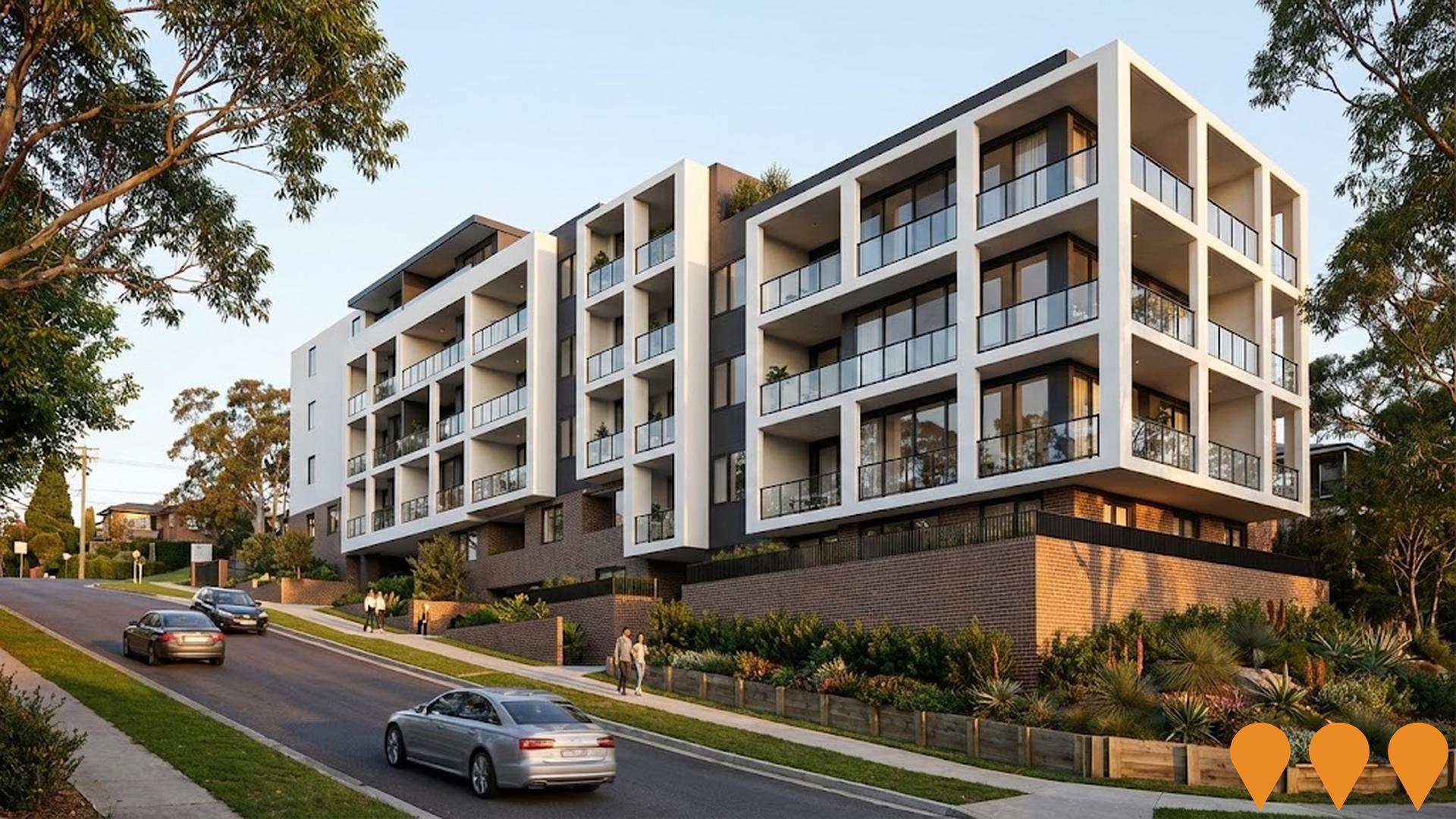
Molonglo Group Centre to Town Centre Transition
Transition of Molonglo Group Centre to Town Centre status to accommodate 70,000+ residents by 2050. Will include college, library, community centre, transport interchange and major commercial centre development.
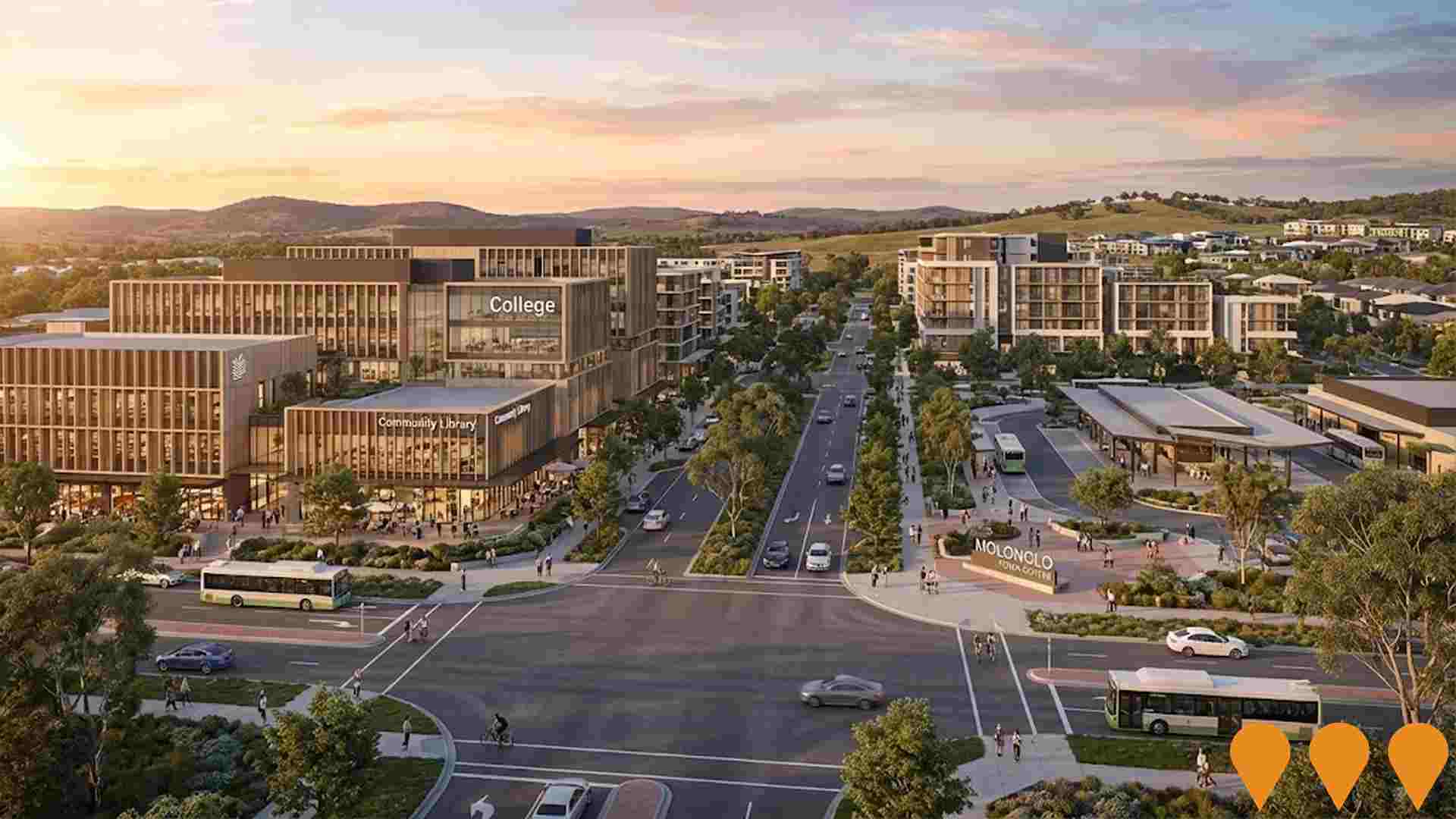
Enhanced bus and light rail corridors (Belconnen & Queanbeyan to Central Canberra)
ACT is progressing an integrated program to enhance high-frequency bus and future light rail corridors that link Belconnen and Queanbeyan with central Canberra. Light Rail Stage 2A (City to Commonwealth Park) commenced construction in early 2025 with services targeted from 2028, while planning and approvals continue for Stage 2B to Woden. The ACT Government has acknowledged and is planning upgrades for the Belconnen-to-City bus corridor as groundwork for a future east-west light rail Stage 3, and is coordinating cross-border public transport initiatives with NSW through the Queanbeyan Region Integrated Transport Plan and the ACT-NSW MoU for Regional Collaboration.
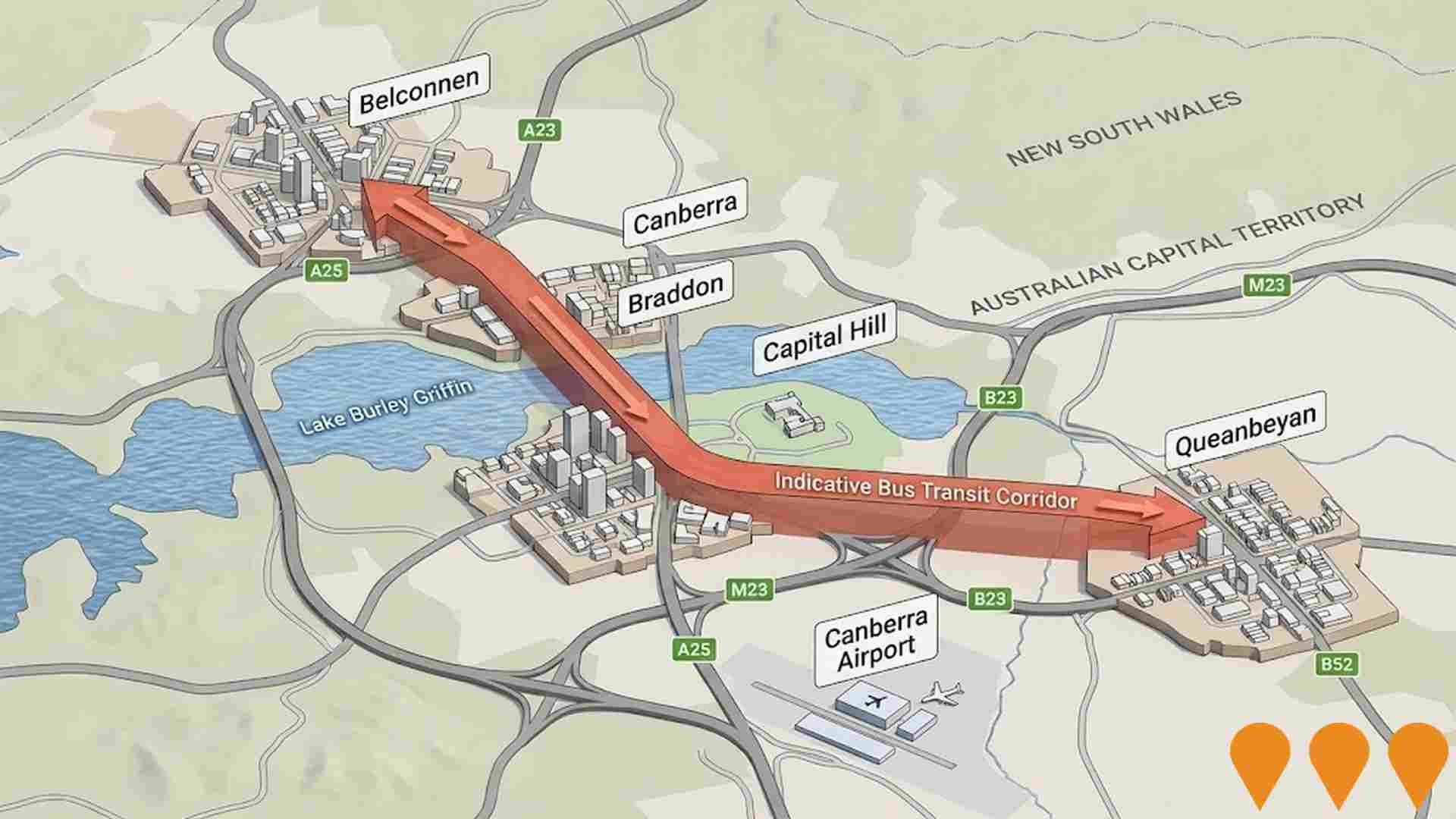
HumeLink
HumeLink is a new 500kV transmission line project connecting Wagga Wagga, Bannaby, and Maragle, spanning approximately 365 km. It includes new or upgraded infrastructure at four locations and aims to enhance the reliability and sustainability of the national electricity grid by increasing the integration of renewable energy sources such as wind and solar.
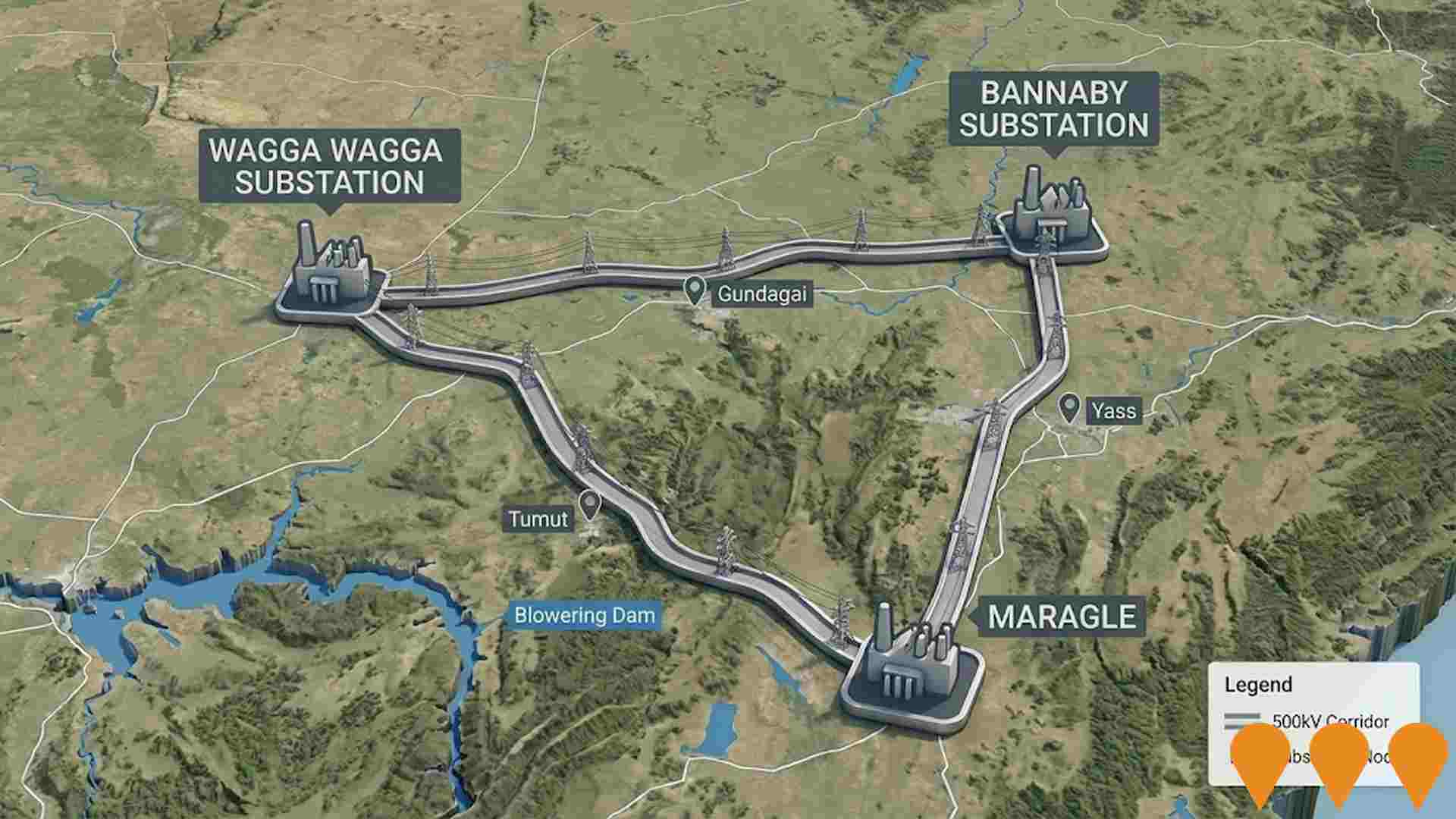
Queanbeyan Regional Integrated Transport Plan
Comprehensive transport planning initiative with 64 key actions for next 10 years. Addresses road safety, active transport connectivity, public transport availability, and future transport needs. Improved connections between Queanbeyan and ACT.
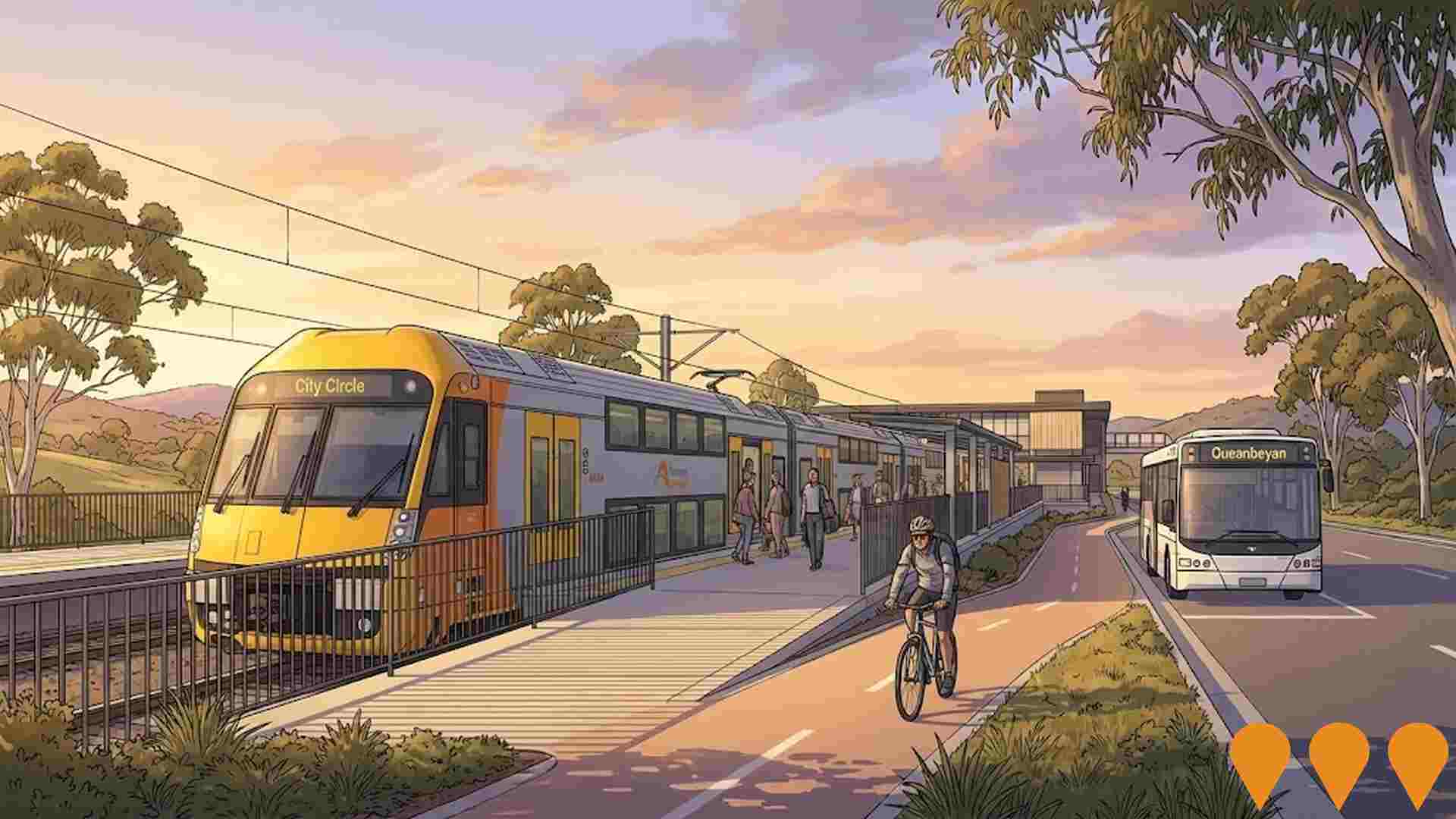
Big Canberra Battery (Williamsdale BESS)
A 250 MW / 500 MWh battery energy storage system at Williamsdale in southern Canberra, delivered by Eku Energy as Stream 1 of the ACT Government's Big Canberra Battery. Construction commenced in November 2024 with partners CPP and Tesla supplying Megapack systems. The asset will connect to Evoenergy's 132 kV network near the Williamsdale substation to provide two hours of dispatchable power, grid services and reliability for the ACT. Target operations in 2026.
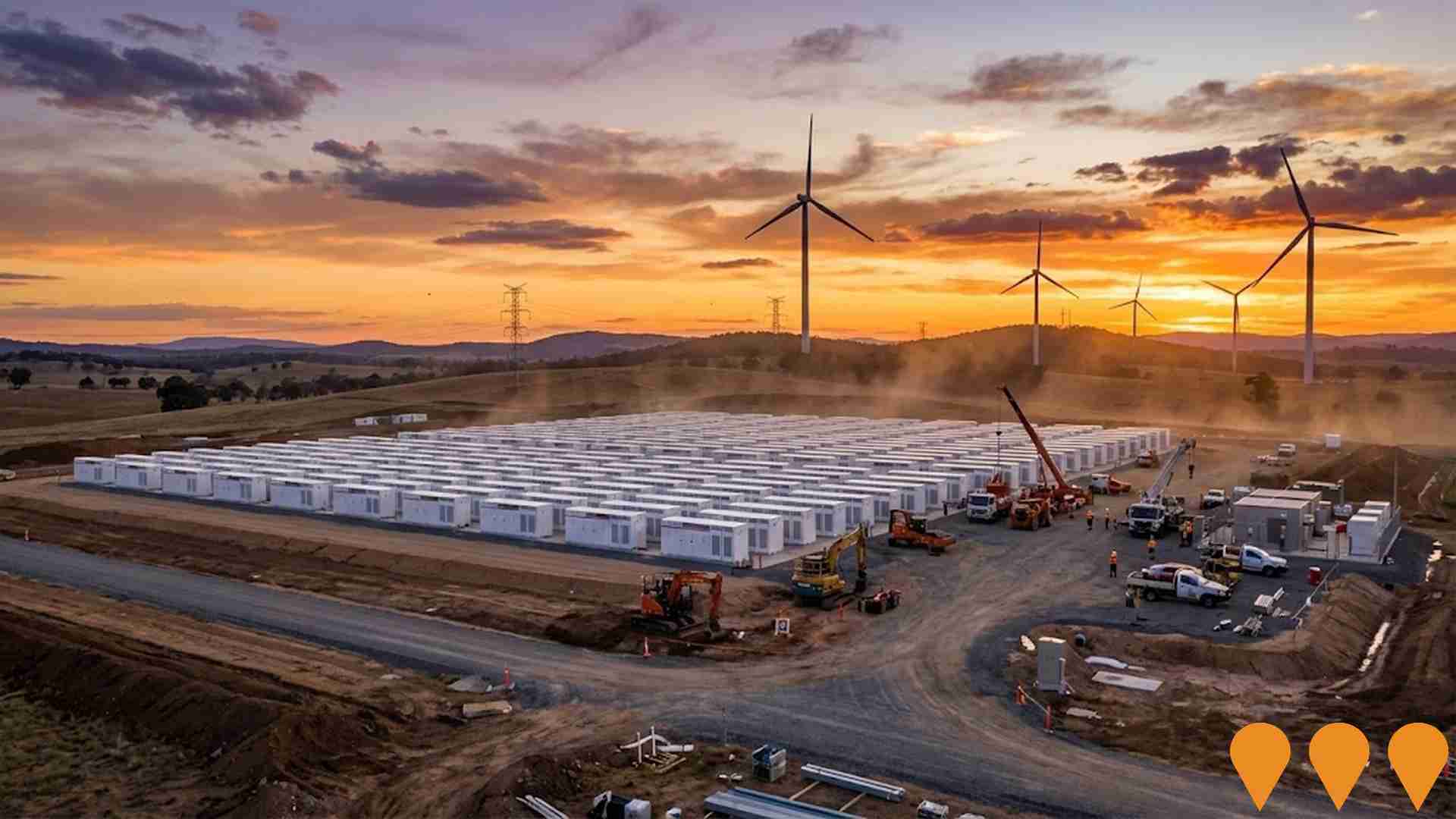
NSW Heavy Vehicle Rest Stops Program (TfNSW)
Statewide Transport for NSW program to increase and upgrade heavy vehicle rest stopping across NSW. Works include minor upgrades under the $11.9m Heavy Vehicle Rest Stop Minor Works Program (e.g. new green reflector sites and amenity/signage improvements), early works on new and upgraded formal rest areas in regional NSW, and planning and site confirmation for a major new dedicated rest area in Western Sydney. The program aims to reduce fatigue, improve safety and productivity on key freight routes, and respond to industry feedback collected since 2022.
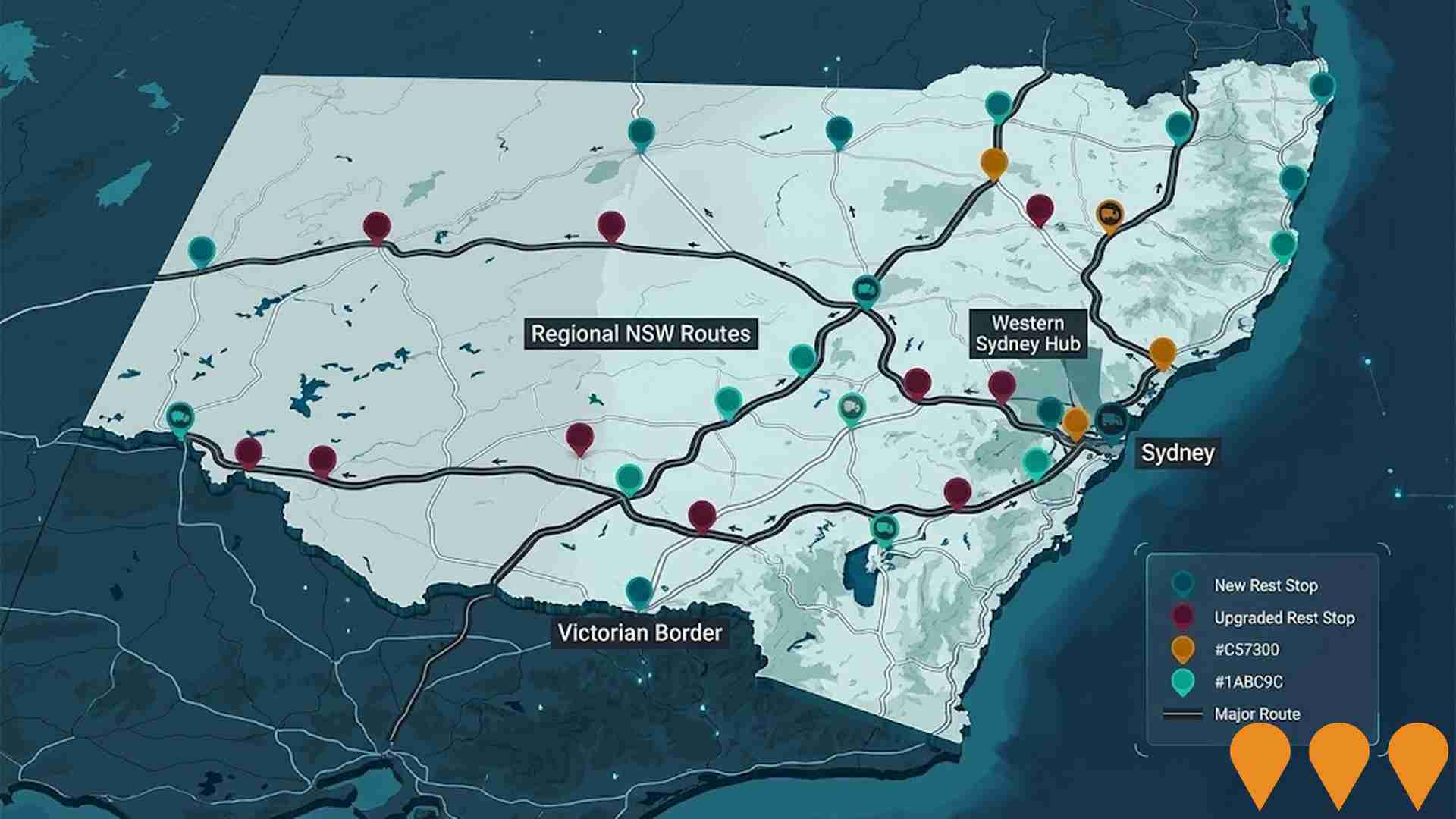
Employment
AreaSearch analysis of employment trends sees Holder performing better than 85% of local markets assessed across Australia
Holder's workforce is highly educated with prominent representation in essential services sectors. The unemployment rate was 1.8% as of June 2025.
Employment growth over the past year was estimated at 3.5%. As of this date, 1,583 residents were employed, with an unemployment rate of 1.6%, below the Australian Capital Territory's rate of 3.4%. Workforce participation was somewhat lower than standard (65.5% compared to ACT's 69.6%).
Key industries of employment among residents were public administration & safety, professional & technical services, and health care & social assistance. However, accommodation & food services were under-represented at 5.1%, compared to ACT's 6.5%. Employment opportunities locally may be limited, as indicated by the count of Census working population vs resident population. Over the 12 months to June 2025, employment increased by 3.5% while labour force increased by 1.6%, leading to a fall in unemployment by 1.8 percentage points. In comparison, ACT saw employment grow by 1.9%. Jobs and Skills Australia's national employment forecasts from May 2025 project national employment growth of 6.6% over five years and 13.7% over ten years. Applying these projections to Holder's employment mix suggests local growth of approximately 6.4%% over five years and 13.1% over ten years, though these are simple extrapolations for illustrative purposes only.
Frequently Asked Questions - Employment
Income
The economic profile demonstrates exceptional strength, placing the area among the top 10% nationally based on comprehensive AreaSearch income analysis
Holder shows a median taxpayer income of $72,053 and an average of $85,718 according to the latest postcode level ATO data aggregated by AreaSearch for financial year 2022. This is among the highest in Australia, contrasting with Australian Capital Territory's median income of $68,678 and average income of $83,634. Based on Wage Price Index growth of 13.6% since financial year 2022, current estimates would be approximately $81,852 (median) and $97,376 (average) as of September 2025. Census data reveals household, family and personal incomes all rank highly in Holder, between the 85th and 94th percentiles nationally. The data shows the $1,500 - 2,999 bracket dominates with 33.1% of residents (949 people), reflecting patterns seen the metropolitan region where 34.3% similarly occupy this range. The substantial proportion of high earners (37.9% above $3,000/week) indicates strong economic capacity throughout this suburb. After housing costs, residents retain 87.2% of income, reflecting strong purchasing power and the area's SEIFA income ranking places it in the 9th decile.
Frequently Asked Questions - Income
Housing
Holder is characterized by a predominantly suburban housing profile, with above-average rates of outright home ownership
The dwelling structure in Holder, as assessed in the latest Census, consisted of 74.6% houses and 25.4% other dwellings (semi-detached, apartments, 'other' dwellings), compared to Australian Capital Territory's 81.7% houses and 18.2% other dwellings. Home ownership in Holder was at 39.0%, aligning with the Australian Capital Territory level, while mortgaged dwellings accounted for 42.1% and rented ones for 18.9%. The median monthly mortgage repayment in Holder was $2,167, lower than the Australian Capital Territory average of $2,251. The median weekly rent figure in Holder was $465, higher than the Australian Capital Territory's average of $420. Nationally, Holder's median monthly mortgage repayments were significantly higher than the Australian average of $1,863, and rents were substantially above the national figure of $375.
Frequently Asked Questions - Housing
Household Composition
Holder has a typical household mix, with a lower-than-average median household size
Family households constitute 72.3% of all households, including 31.5% couples with children, 29.0% couples without children, and 11.2% single parent families. Non-family households comprise the remaining 27.7%, with lone person households at 24.9% and group households making up 2.2% of the total. The median household size is 2.5 people, which is smaller than the Australian Capital Territory average of 2.6.
Frequently Asked Questions - Households
Local Schools & Education
Holder demonstrates exceptional educational outcomes, ranking among the top 5% of areas nationally based on AreaSearch's comprehensive analysis of qualification and performance metrics
Holder has a significantly higher educational attainment than the Australian average. 48.1% of its residents aged 15 and above hold university qualifications, compared to Australia's 30.4%. The area's most common qualification is bachelor degrees at 27.8%, followed by postgraduate qualifications (13.7%) and graduate diplomas (6.6%). Vocational pathways account for 23.9% of qualifications among those aged 15 and above, with advanced diplomas at 11.1% and certificates at 12.8%.
Educational participation is high, with 30.3% of residents currently enrolled in formal education. This includes 9.4% in primary education, 8.1% in secondary education, and 6.4% pursuing tertiary education. Holder's three schools have a combined enrollment of 494 students. The area shows significant socio-educational advantages and academic achievement, with an ICSEA score of 1136. Education provision is balanced, with two primary schools and one secondary school serving distinct age groups.
Frequently Asked Questions - Education
Schools Detail
Nearby Services & Amenities
Transport
Transport servicing is good compared to other areas nationally based on assessment of service frequency, route connectivity and accessibility
The analysis of public transportation in Holder shows that there are currently 25 operational transport stops. These stops serve a variety of bus routes, with a total of 6 individual routes providing service to the area. The combined weekly passenger trips across these routes amount to 1,038.
Residents have excellent access to public transportation, with an average distance of 198 meters to the nearest stop. On average, there are 148 trips per day across all routes, which equates to approximately 41 weekly trips per individual stop.
Frequently Asked Questions - Transport
Transport Stops Detail
Health
Holder's residents are relatively healthy in comparison to broader Australia with a fairly standard level of common health conditions seen across both young and old age cohorts
Holder's health metrics closely align with national benchmarks. Common health conditions seen across both young and old age cohorts are fairly standard. Approximately 63% of the total population (1816 people) have private health cover, which is higher than the Australian Capital Territory average of 60.9%.
Nationally, this figure stands at 55.3%. The most prevalent medical conditions in the area are asthma and mental health issues, affecting 9.1% and 9.0% of residents respectively. 66.8% of residents report being completely clear of medical ailments, compared to 66.3% across Australian Capital Territory. There are 17.8% (511 people) of residents aged 65 and over in the area, which is lower than the Australian Capital Territory figure of 20.6%. Health outcomes among seniors in this area exceed average levels and perform better than those seen in the general population.
Frequently Asked Questions - Health
Cultural Diversity
The level of cultural diversity witnessed in Holder was found to be above average when compared nationally for a number of language and cultural background related metrics
Holder's cultural diversity was above average, with 23.6% of its population born overseas and 16.4% speaking a language other than English at home. Christianity was the predominant religion in Holder, comprising 46.0% of people. Hinduism, however, was overrepresented at 2.5%, compared to the Australian Capital Territory average of 2.0%.
The top three ancestry groups were English (25.8%), Australian (22.8%), and Irish (11.0%). Notably, Polish (1.1% vs regional 0.9%), Hungarian (0.4% vs 0.6%), and French (0.7%) ethnicities showed significant divergences in representation compared to the region's averages.
Frequently Asked Questions - Diversity
Age
Holder's median age exceeds the national pattern
The median age in Holder is 41 years, which is higher than the Australian Capital Territory's average of 35 years and modestly exceeds the national average of 38 years. Compared to the Australian Capital Territory average, the 45-54 cohort is notably over-represented at 14.6% in Holder, while the 25-34 year-olds are under-represented at 11.5%. Post-2021 Census data shows that the 35 to 44 age group has grown from 14.9% to 16.8%, and the 15 to 24 cohort increased from 10.3% to 11.8%. Conversely, the 65 to 74 cohort has declined from 10.1% to 8.4%, and the 5 to 14 group dropped from 12.6% to 11.3%. Population forecasts for Holder indicate substantial demographic changes by 2041. Leading this shift, the 45 to 54 age group is projected to grow by 16 people, reaching 486 from 419. Meanwhile, both the 15 to 24 and 0 to 4 age groups are expected to see reduced numbers.


